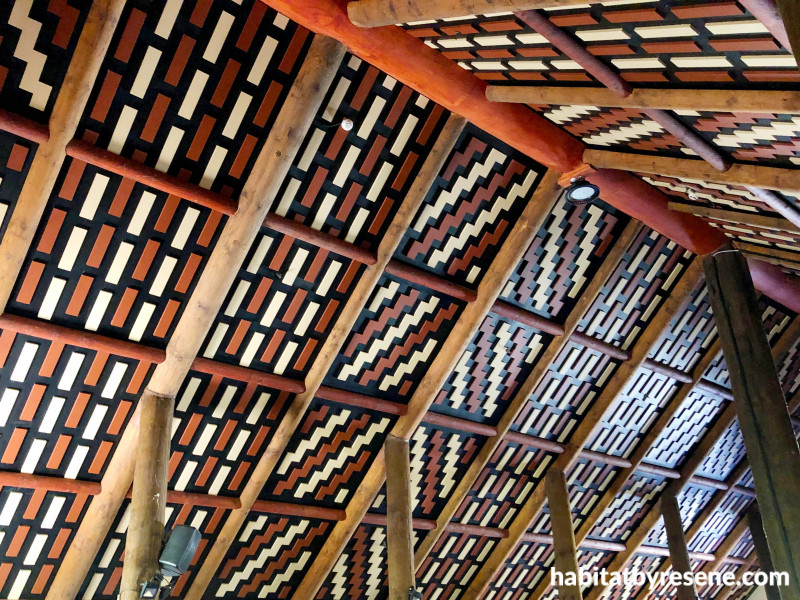
Honouring Māori tradition with design and the Resene Traditional Māori Colour Palette
08 Nov 2022
Many buildings tell a story of a moment in time through their architecture, materials and construction, traditional Māori architecture often goes a step further with the whare design itself telling a story of ancestors/tupuna through carvings and kōwhaiwhai patterns painted on the heke (rafters).
Honouring the past while using modern day materials is a challenge many designers face when restoring and renovating heritage buildings. Tawa Architecture and Design rose to the occasion when asked to take on the ceiling repair of Matuatonga, the wharenui of Te Kura Kaupapa Māori o Te Koutu, near Rotorua.
Built in 2004, the original thatch-like lining of the building was falling away. “Trailer-loads” of pre-cut and painted MDF shapes painted in colours from the Resene Traditional Māori Colour Palette were used to restore the building.
The individual pieces for the ceiling patterns were created after close consultation between Tawa and the school. The vision was to line the ceiling with timber battens, similar to traditional woven kōwhaiwhai panels in patterns that reflected traditional narratives that resonated with the school, particularly the tupuna (ancestor) Tāwhaki, to promote korero and learning of his stories.
Tāwhaki is known for his journey through the heavens, and his defeat of the Ponaturi to avenge the death of his father and rescue his mother.
Tawa director Brooke Cholmondeley-Smith says two patterns were developed after conversations with the school.
Poutama Wāhine is a stepped design reflecting Tāwhaki’s trip to the heavens and represents the whakapapa of Tāwhaki.
Ngā Aka is based on a Roimata Toroa pattern, modified to represent the vines Tāwhaki and his brother Karihi climbed to get to heaven, against the warning of their grandmother Matakerepō.
One of the project’s biggest challenges, says Brooke was settling on a design that was faithful to the narrative, but could be achieved with the project’s modest budget.
“We had to spend more design time really refining the designs to a point where they were affordable while making sure the narrative was clear.”
A simple, traditional colour palette of red, black and white was always part of the plan, as it is commonly used on kōwhaiwhai, and would connect the new ceiling panels with any future work on the adjacent beams. The Tawa team turned to Resene Uhi, Resene Kakaramea and Resene Muka from the Resene Traditional Māori Colour Palette.
“The heritage range from Resene was perfect for the kaupapa. The red colour, Resene Kakaramea, was inspired by red clay that can be found in Rotorua and used to dye/colour timber like whakairo a deep blood like red.
“Having those colours gave us a starting point. We knew what we wanted to achieve and having those colours that were named after and playing with the themes we were trying to represent, made it easier.
“Rather than us just picking a light brown and saying, ‘it’s close to flax fibre colours, these colours have been carefully selected. Plus, all those colours really complement each other, which looks great.”
Brooke says though painting, assembling and installing the panels was a huge job, completed with the help of a team of volunteers, he’s pleased with the final result.
“I think in the end it was a great solution, and the kura, and all the students have been super positive about it.”
design Tawa Architecture and Design www.tawaarch.co.nz
About the Traditional Māori Colour Palette
For many years Resene has supported the DIY Māori tv series which focuses on collaborative efforts to protect and rejuvenate Marae buildings. Resene worked with Māori ethnographer Wiremu to create a colour palette that honours the colour nuances of traditional whare and wharenui with seven key hues. The Traditional Māori Colour Palette is an addition to the Resene Heritage colour collection.
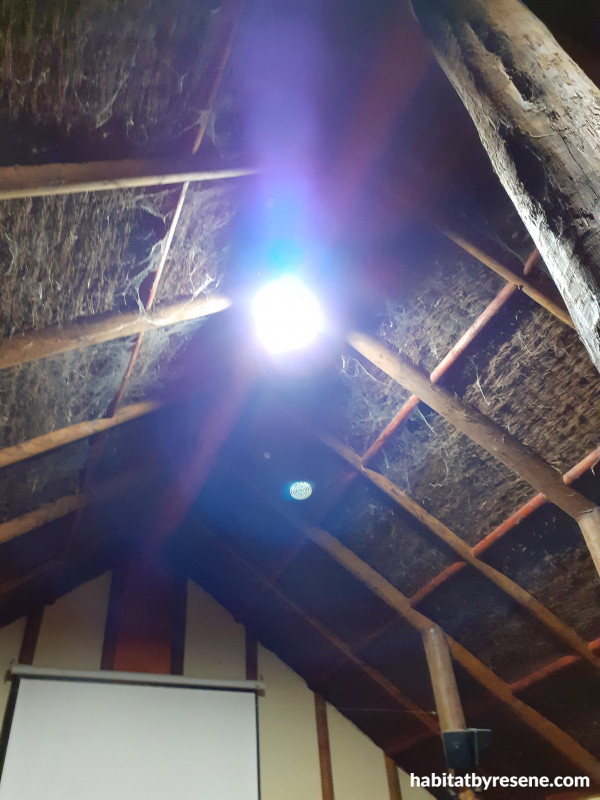
Before: The original ceiling fibres of Matuatonga, the wharenui of Te Kura Kaupapa Māori o Te Koutu were first installed in 2004 and were in need of repair, so the school called in Tawa Architecture and Design to create something new.
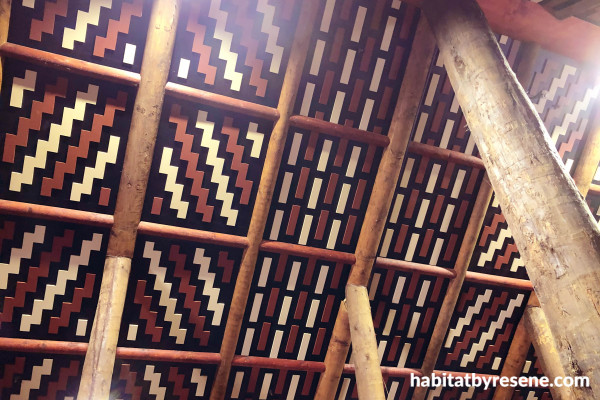
Two different designs were chosen to reflect the school’s connection with the story of Tāwhaki. To keep to a traditional kōwhaiwhai colour scheme the black batten substrates are dark Resene Uhi, with the design in Resene Kakaramea and Resene Muka, all from the Resene Traditional Māori Colour Palette.
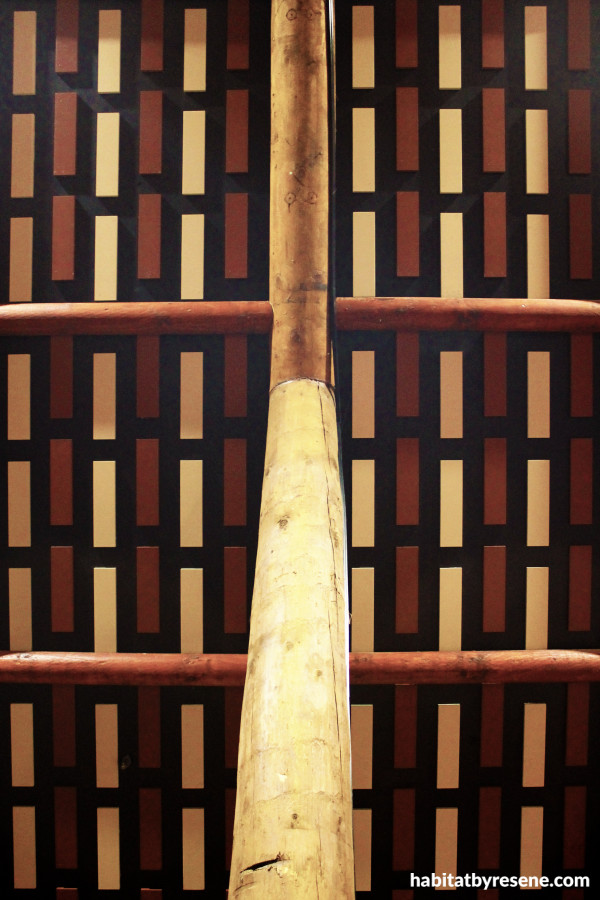
The Nga Aka design is based on a modified Roimata Toroa pattern, which often represents sorrow. Many tellings of the Tāwhaki story include the death of him and his brother Karihi. In this panel the light painted Resene Muka represents Karihi and the red Resene Kakaramea represents the blood of Tāwhaki.
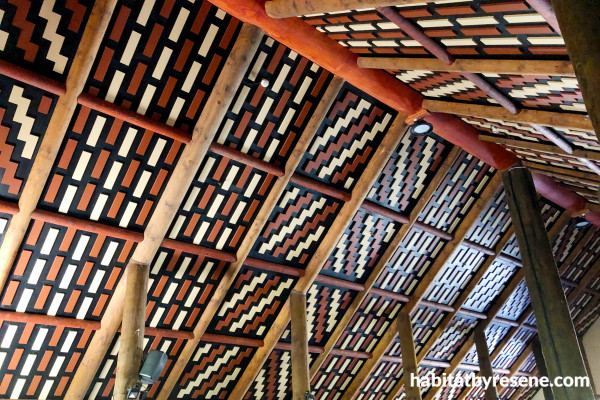
For each panel hundreds of MDF shapes were individually cut then pre-painted in Resene Muka and Resene Kakaramea before being attached to the substrate painted in Resene Uhi and installed in the ceiling.
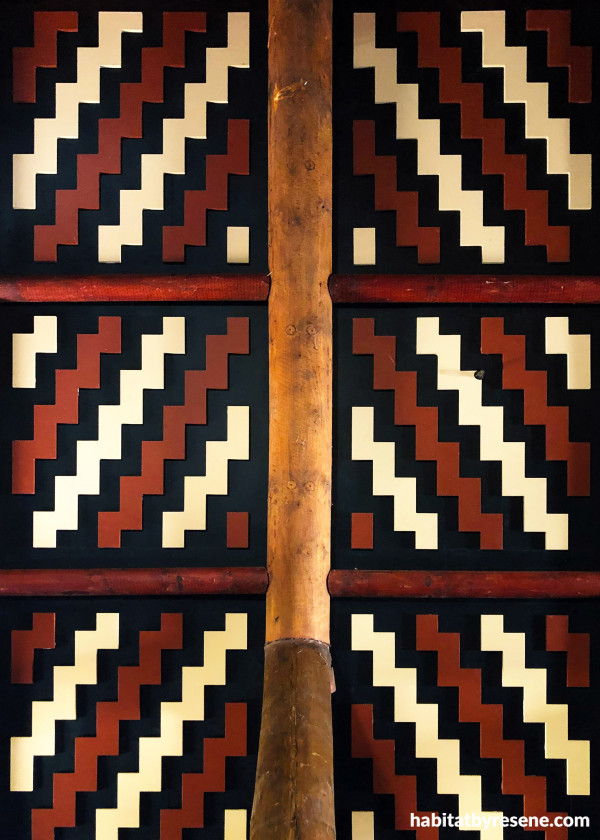
The stepped Poutama Wāhine design reflects Tāwhaki’s trip to the heavens. By mirroring the in adjacent panels, it also represents the whakapapa of Tāwhaki and family tree that he draws from his parents, Urutonga and Hema.
Published: 08 Nov 2022





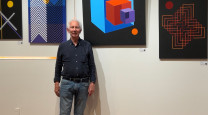








 look book
look book